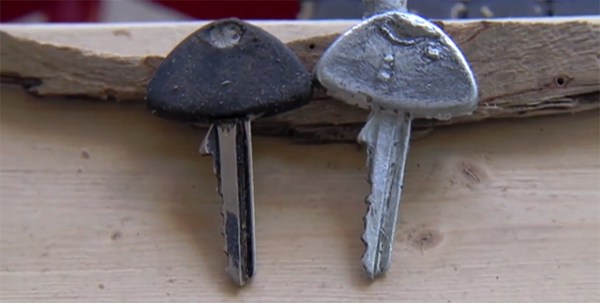Many of you will probably at some point have looked at a satellite dish antenna and idly wondered whether it would collect useful amounts of heat if you silvered it and pointed it at the sun. Perhaps you imagine a handy source of solar-cooked hotdogs, or maybe you’re a bit of a pyromaniac.
[Charlie Soeder] didn’t just think about it, he did it. Finding a discarded offset-focus DirecTV dish, he glued a grid of 230 inch-square mirror tiles to it and set to investigating the concentrated solar energy at its focus.
Cotton waste, newspaper, and scraps of fabric char and burn with ease. A cigarette is lit almost from end to end, and it burns a hole right through a piece of bamboo. Most of the energy is in the form of light, so transparent or reflective items need a little help to absorb it from something dark. He demonstrated this by caramelizing some sugar through adding a few bits of charcoal to it, once the charcoal becomes hot enough to caramelize the sugar around it the spreading dark colour causes the rest of the sugar to caramelize without further help.

To gain some idea of the power of his solar furnace, he recorded a time series of temperature readings as it heated up some water darkened with a bit of charcoal to absorb heat. The resulting graph had a flat spot as a cloud had passed over the sun, but from it he was able to calculate instantaneous power figures from just below 30W to just below 50W depending on the sun.
He records his progress in the video you’ll find below the break. Will we be the only ones casting around for a surplus dish after watching it?
Continue reading “Characterizing A Death Ray… Er, Solar Oven”













